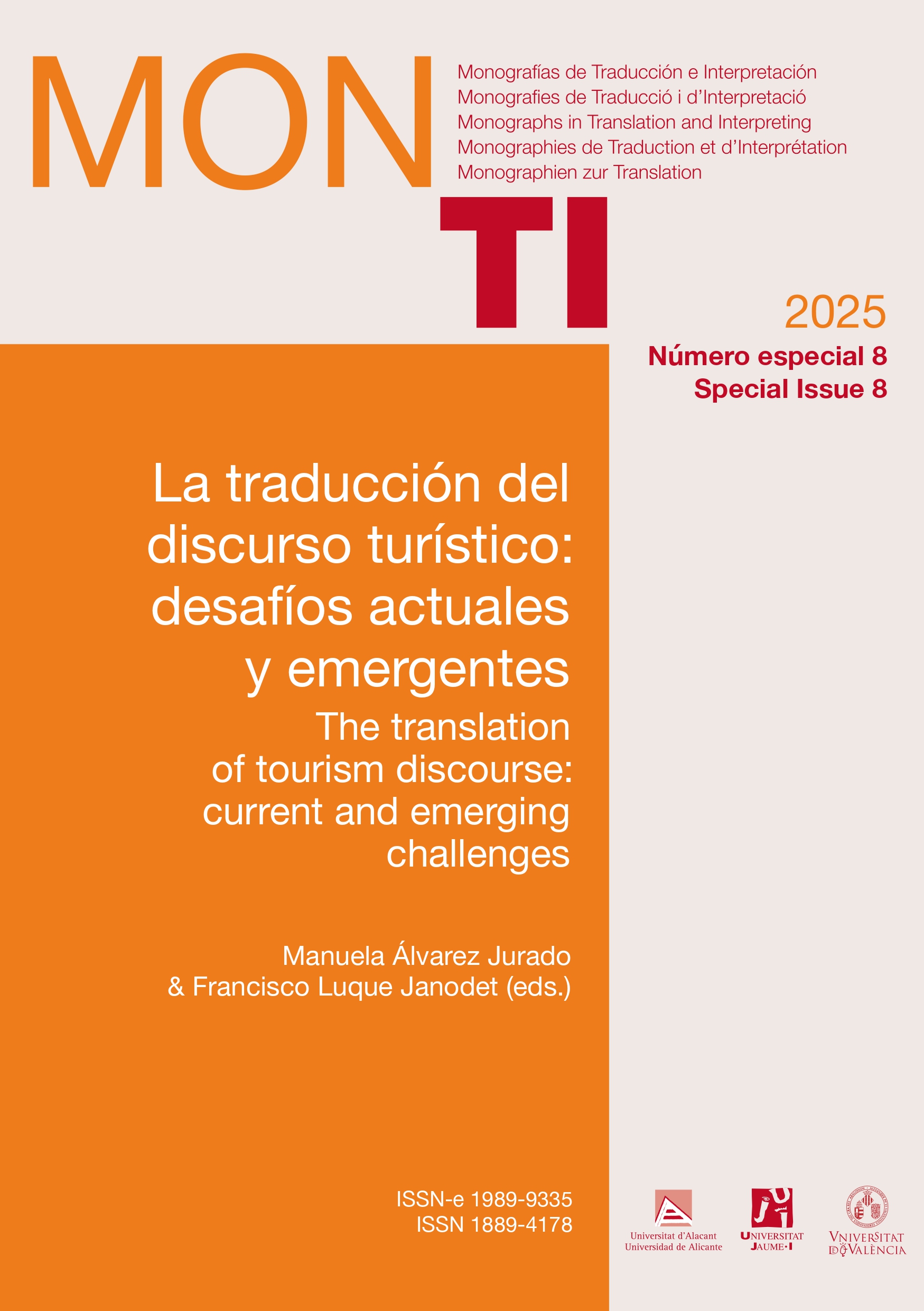The translation of starred-MICHELIN restaurants: right and wrong decisions
Main Article Content
Abstract
Quality is an innate aspect of MICHELIN-starred restaurants because all the elements are taken care of every detail. For this reason, we must therefore presume that the menus of these establishments have highly qualified translations. After compiling all the menus in Spanish and English, applying Waddington's (1999) correction model, and conducting a brief questionnaire, we discovered the importance of languages in the sector, the common difficulties, and several errors (mainly omissions, additions, or concerning style). Regarding all the agents who have participated in the translation (professionals, chefs, and natives), we have observed that people with all the necessary skills make mistakes in understanding the texts while cooking experts err in style and in transferring complex elements. In essence, texts are correct, but they present errors derived from the difficulties of working with culturemes, condensed and subordinate texts.
Downloads
Article Details

This work is licensed under a Creative Commons Attribution 4.0 International License.
The documents contained in these directories are included by the contributing authors as a means to ensure timely dissemination of scholarly and technical work on a non-commercial basis. It is understood that all persons copying this information will adhere to the terms and constraints invoked by each author's copyright. These works may not be reposted without the explicit permission of the copyright holder.
References
BAHLS, Álvaro et alii. (2019) “Comprensión de los conceptos de culinaria y gastronomía: Una revisión y propuesta conceptual.” Estudios y perspectivas en turismo 28:2, pp. 312-330.
BAILINI, Sonia. (2014) “La traducción de textos agroalimentarios del español al italiano: más allá de la afinidad lingüística.” Skopos 4, pp. 15-34. https://helvia.uco.es/xmlui/handle/10396/16153
BUGNOL, María Ange. (2006) “La traducción de la gastronomía: textos y contextos.” TRANS 10, pp. 9-22. https://revistas.uma.es/index.php/trans/article/view/1066
CALVI, María Vittoria. (2010) “Los géneros discursivos en la lengua del turismo una propuesta de clasificación.” Ibérica 19, pp. 9-32. https://revistaiberica.org/index.php/iberica/article/view/351
CASTELLANO MARTÍNEZ, José María. (2021) Fundamentos nocionales y traductológicos para la traducción de textos turísticos promocionales. Granada: Comares.
DANN, Graham. (1996) The Language of Tourism: A Sociolinguistic Perspective. Wallingford: CAB International.
DELISLE, Jean et alii. (1999) Terminologie de la traduction. Amsterdam & Philadelphia: John Benjamins.
EZPELETA PIORNO, Pilar & Silvia Gamero Pérez. (2004) “Los géneros técnicos y la investigación basada en corpus: proyecto GENTT.” Speech delievered at the III Congreso Internacional de Traducción Especializada. https://repositori.uji.es/xmlui/bitstream/handle/10234/78489/forum_2007_33.pdf?sequence=1
GOMES TEIXEIRA et alii. (2013) “El sistema de oferta de restaurantes de alta gastronomía. Una perspectiva sensorial de las experiencias de consumo.” Estudios y Perspectivas en Turismo 22:2, pp. 336-356. http://www.scielo.org.ar/scielo.php?script=sci_arttext&pid=S1851-17322013000200009
GONZÁLEZ-PASTOR, Diana María. (2018) ¿Cómo se traducen los culturemas del ámbito turístico? Análisis de estrategias de traducción (español-inglés). Granada: Comares.
MICHELIN GUIDE. (2022) “What is a Michelin Star?” https://guide.michelin.com/en/article/features/what-is-a-michelin-star
HURTADO ALBIR, Amparo. (1996) “La enseñanza de la traducción directa ‘general’. Objetivos de aprendizaje y metodología.” In: Hurtado Albir, Amparo (ed.) 1996. La enseñanza de la traducción. Castellón: Universitat Jaume I, pp. 31-56.
HURTADO ALBIR, Amparo. (2001) Traducción y traductología Introducción a la traductología. Madrid: Cátedra.
IBÉRICOS VALLE HERMOSO. (sin fecha) “Presa ibérica.” https://www.ibericosvallehermoso.com/en/iberico-pork-shoulder-steak-ibermoso
KUPSCH-LOSEREIT, Sigrid. (1985) “The problem of translation error evaluation.” In: Tirford, Christopher & Adolf E. Hieke. (eds.) 1985. Translation in Foreign Language Teaching and Testing. Tübingen: Gunter Narr, pp. 169-179.
MOLINA, Lucía. (2006) El otoño del pingüino. Análisis descriptivo de la traducción de los culturemas. Castelló de la Plana: Universitat Jaume I.
MOLINER, María. (2004 [1996]) Diccionario de uso del español (Ed. abreviada por la Editorial Gredos). Madrid: Gredos.
NIDA, Eugene. (2001) Language and Culture. Contexts in Translating. Shanghai: Shanghai Foreign Language Education Press.
NORD, Christiane. (2009) “El funcionalismo en la enseñanza de traducción.” Mutatis Mutandis 2:2, pp. 209-243. https://doi.org/10.17533/udea.mut.2397
UN TOURISM. (n.d.) Gastronomy and Wine Tourism. https://www.unwto.org/gastronomy-wine-tourism
PONCE MÁRQUEZ, Nuria. (2006) “Metodología en la clase de traducción: dificultades pragmático-culturales en la traducción de textos turísticos.” Tonos Digital 12. http://www.tonosdigital.com/ojs/index.php/tonos/article/view/48/47
REAL ACADEMIA ESPAÑOLA. (2023) Diccionario de la Lengua Española. Versión electrónica: https://www.dle.rae.es
RIVAS CARMONA, María del Mar & María Ángeles Ruiz Romero. (2021) Feeding the future. Text Typology in Agri-Food Translation. Valencia: Universitat de València.
RODRÍGUEZ ABELLA, Rosa María. (2010) “La traducción de los culturemas en el ámbito de la gastronomía (análisis de los folletos Turespaña).” In: Civil, Pierre & Françoise Crémoux (coords.) 2010. Nuevos caminos del hispanismo... https://cvc.cervantes.es/literatura/aih/pdf/16/aih_16_2_026.pdf
VENUTI, Lawrance. (1995) The translator’s invisibility: history of translation. London: Routledge.
WADDINGTON, Christopher. (1999) Estudio comparativo de diferentes métodos de evaluación de traducción general (inglés-español). Madrid: Universidad Pontificia Comillas.


